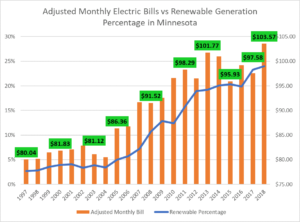Power generation and rate structure
October 4, 2020

Power valuing (likewise alluded to as power duties or the cost of power) can shift broadly by nation or territory inside a country. Power costs rely on numerous variables, such as the cost of intensity age, government duties or sponsorships, neighborhood climate examples, transmission and appropriation foundation, and multi-layered industry guidelines for Pulse Power plans . The valuing or taxes can likewise contrast contingent upon the client base, commonly by private, business, and modern associations. As per the U.S. Vitality Information Administration (EIA), “Power costs for the most part mirror the expense to construct, money, keep up, and work influence plants and the power framework.” Estimating anticipating is the technique by which a generator, a service organization, or a substantial mechanical buyer can foresee the discount costs of power with sensible precision. Because of the inconveniences of power age, the expense to gracefully power fluctuates step by step. Some service organizations are revenue driven elements, and their costs incorporate a money related return for proprietors and financial specialists. These service organizations can practice their political force inside existing legal and administrative systems to ensure a budgetary return and lessen rivalry from different sources like a disseminated age.

Rate structure
There are staggered administration structures that set power rates in standard managed imposing business model business sectors like the United States. The rates are resolved through an administrative cycle that is managed by a Public Service Commission. Moreover, the Federal Energy Regulatory Commission (FERC) works the discount power market alongside the interstate transmission of power. Public Service Commissions (PSC), otherwise called Public Utility Commissions (PUC), manages utility rates inside each state. The consideration of sustainable power source dispersed age (DG) and progressed metering Foundation (AMI or smart meter) in the advanced power framework has presented numerous elective rate structures. There are a few techniques that cutting-edge utilities structure private rates:
- Simple (or fixed) – the rate at which clients pay a level rate for every kWh
- Tiered (or step) – rate changes with the measure of utilization (some go up to support vitality preservation, others go down to empower use and power supplier benefit)
- Time of utilization (TOU) – diverse rate contingent upon the hour of the day
- Demand rates – because of the pinnacle interest for power a shopper employments Tiered inside TOU – various rates relying upon the amount they use at a particular season of day
- Seasonal rates – charged for those that don’t utilize their offices all year (for example, a house)
- Weekend/occasion rates by and large unexpected rates in comparison to during typical occasions. Among a couple of private rate structures offered by present-day utilities.
Power Utilizing
The straightforward rate charges a particular dollar for each kilowatt expended. The layered rate is one of the more normal private rate programs. The layered quality charges a higher rate as the client use increments. TOU and request rates are organized to help keep up and control a utility’s pinnacle request. The idea at its center is to dishearten clients from adding top burden times by charging them more cash to utilize power. Generally, rates have been negligible around evening time because the pinnacle is during the day when all areas are power.
